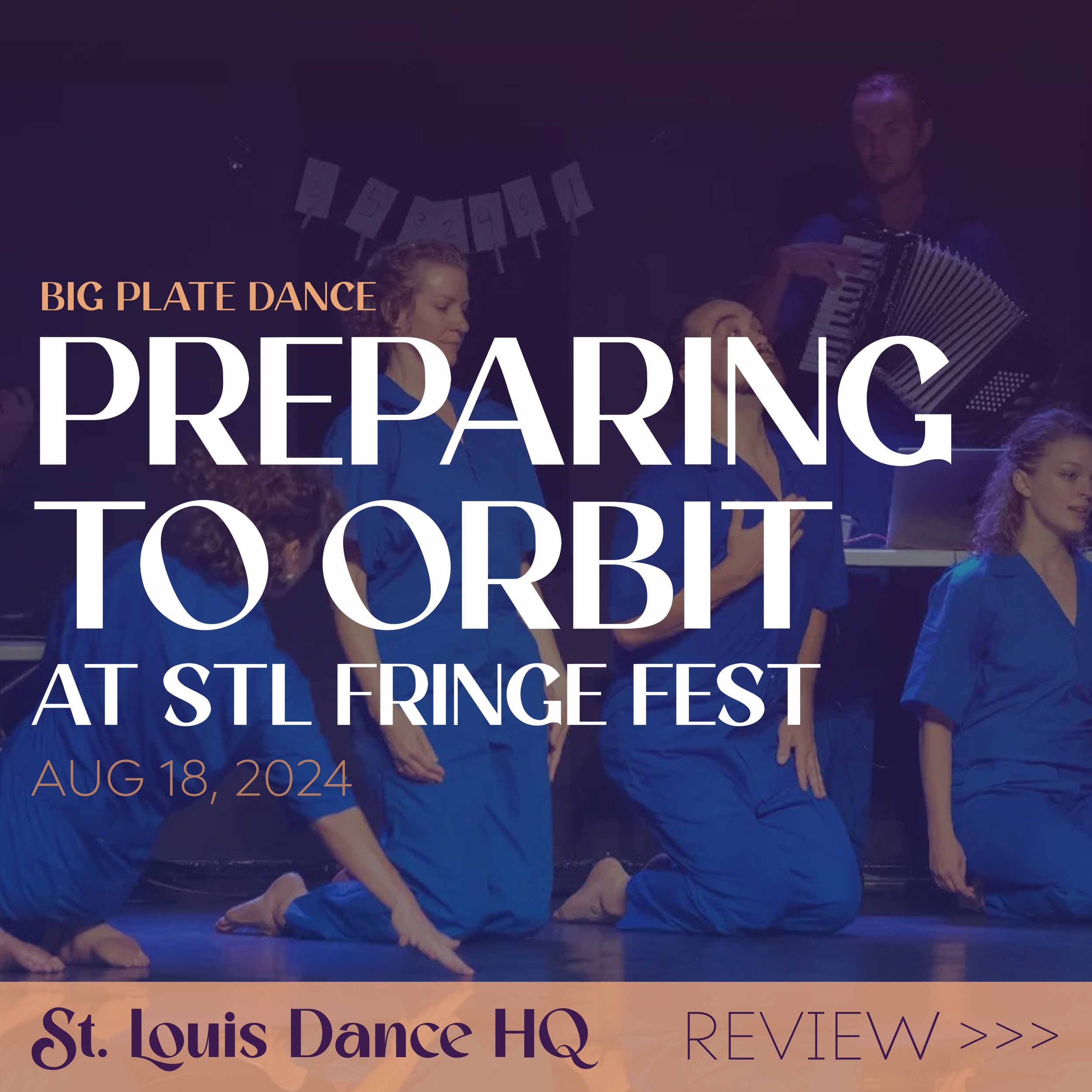HQ Review: “Preparing to Orbit” by Big Plate Dance
Last Sunday afternoon I, along with a couple of dozen other audience members, found ourselves under the dim blue lights of the The .ZACK Theater walking together in a wide circle. Chairs were staggered in disjointed rows around us as we encircled the room, and above us a stage, empty and dark, loomed. Music coming from beyond the circle of chairs as walkers ebbed and flowed; electronic and atmospheric. We picked our way around the room, avoiding several large pillars that intersected the carpeted space, led in this peculiar game of orbit by five dancers in white jumpsuits who looked around at us with reassuring smiles. Eventually, chairs around the circle began to fill, a shift likely set off by one of the dancers, and the game became more akin to musical chairs. A slight tinge of anxiety was introduced: “Who would be the last one walking?”
This group activity served as the opening of Preparing to Orbit, a dance performance presented by Big Plate Dance as part of the STL Fringe Festival on August 18th. The company is led by artistic director Tayler Kinner and the show’s program notes hinted at the company’s approach to movement: “We believe deeply that improv has the capacity to bring an abundance of joy and connection in our lives.”
Once the audience was seated, performers began to emerge from among the chairs, moving to the center of the room. They danced with controlled swings and sweeping gestures – propelling themselves off the floor momentarily and sinking again into stillness, deep side bends, or crouched positions. Occasionally moving in slow unison, their bodies created long curved shapes and abrupt angular lines. They were often in contact with one another by leaning on each other, manipulating a partner's limbs, or by way of shared focus. The engaging interaction between performers was echoed in their connection with the musicians. Carrying percussive instruments with them around the room, sometimes weaving between the audience members, and other times standing directly beside a performer, the musicians became embodied partners in the performance. The dancers were particularly sensitive to the music, their bodies responding with delicacy and malleability to the improvised sounds.
In Preparing for Orbit, the definitions of performance, performer, and audience were disassembled and rearranged in real-time. While these are not the first artists to investigate ideas of performer’s relationship to space, music, or spectators, what stood out in this particular experience was the playful and attentive approach. “This is an experiment” a dancer whispered to me with a grin about halfway through the show. In the aftermath of a performer-led chair shuffle, I had ended up directly behind a pillar and could not see the rousing duet taking place in the center. I was discreetly and quickly taken to a better vantage point. When they were not dancing or darting in and out of audience members I noticed many similar instances of performer-led care for the audience. Noticing discomfort, offering options, reminding us of our autonomy, of our seen-ness, and their approachability, these artists created a relaxed atmosphere in what could have been a disorienting one for someone more familiar with typical concert dance structure.
It can be wonderful to come away from a performance with more questions than answers: What is dance for? Where does it belong? How does dance happen? To whom? How should an audience behave? There are many ways of understanding what dance can (or should) do. In that spirit of curiosity and open inquisitiveness, we may also ask ourselves: if dance is considered to be a human endeavor, which is to say a “normal” part of being a person with a body, then can the experience of dance performance be allowed to resemble what being a body is actually like? Perhaps a dance performance need not always be the polished product of confident mastery but can also (or instead) be full of hypotheses, experimentation, things going not-quite-right, quick pivots, eye contact, embarrassed laughter, order, presence, and open-endedness – much how our embodied lives so often unfold.
It is in this observation that I experienced the most joy in Big Plate Dance’s performance last weekend: that within a clear command of the movement style and an engrossing performance, there was also a sense of not-knowing, discovery, and arrival. The dancers investigated their relationships to the space by using the floor instead of the stage, to the music by bringing the musician's bodies into the fray, and of course to their audience by offering articulation of our status as individuals and movers even in the often restrictive setting of a dance performance.
Dance as play. Dance as structure. Dance as chaos. Dance as conflict between bodies, spaces, and power. Dance as connection. Dance as delineation. Bodies in motion in space – activating so many of the ways we understand ourselves and one another.
Big Plate Dance will be premiering “Half-Baked” at the Greenfinch Theater & Dive on September 28th, featuring local dance artists sharing work in the middle stages of creation. More information can be found on their socials.

